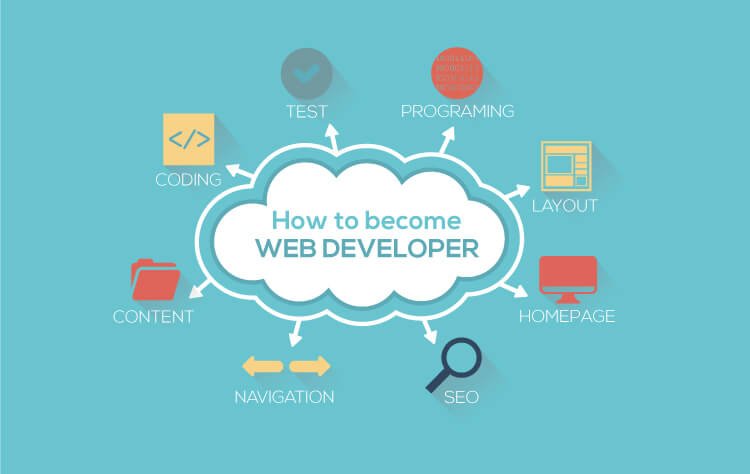
Learning to code and becoming a web developer can be an exciting and rewarding journey. Here’s a step-by-step guide to help you get started and increase your chances of landing a job as a web developer:
Set clear goals: Define what you want to achieve as a web developer. Determine your areas of interest (front-end, back-end, full-stack development, etc.) and set specific goals accordingly.
Choose a programming language: Select a programming language to begin with. Popular languages for web development include HTML, CSS, JavaScript, Python, and Ruby. Consider factors like industry demand, ease of learning, and resources available when making your choice.
Learn the basics: Start with the fundamentals of web development, including HTML (Hypertext Markup Language) for creating web page structure, CSS (Cascading Style Sheets) for styling, and JavaScript for adding interactivity. There are numerous online platforms and resources that offer free or paid courses, tutorials, and documentation to help you learn these languages.
Gain practical experience: Apply your knowledge by working on small projects or exercises. Practice building websites or web applications to reinforce what you’ve learned. Consider creating a personal portfolio website to showcase your work and skills to potential employers.
Expand your knowledge: Once you have a solid understanding of the basics, explore additional topics and frameworks relevant to web development. This may include front-end frameworks like React or Angular, back-end frameworks like Django or Ruby on Rails, and databases like MySQL or MongoDB. Focus on the technologies that align with your goals and the job market you’re targeting.
Build real-world projects: Undertake larger projects that mimic real-world scenarios. This will help you gain practical experience, develop problem-solving skills, and demonstrate your abilities to potential employers. Consider contributing to open-source projects or collaborating with others to showcase your teamwork skills.
Networking and community involvement: Engage with the web development community by attending meetups, conferences, or participating in online forums and communities. Networking can help you find mentors, job opportunities, and stay updated on industry trends.
Create an online presence: Establish a professional online presence by having a LinkedIn profile, GitHub account, or personal website. Share your projects and contributions to showcase your skills to potential employers.
Continuous learning: Web development is a rapidly evolving field, so commit to continuous learning. Stay updated with the latest industry trends, new technologies, and best practices. Follow reputable blogs, subscribe to newsletters, and explore online courses or bootcamps to expand your knowledge.
Prepare your portfolio and resume: Organize your projects, code samples, and contributions into a portfolio. Tailor your resume to highlight your web development skills, projects, and relevant experience. Be prepared to provide code samples or complete coding challenges during job interviews.
Job search and interviews: Start searching for web development job opportunities on online job boards, company websites, or through professional networks. Polish your interview skills and be prepared to answer technical questions and demonstrate your problem-solving abilities. Don’t shy away from junior or entry-level positions as they can provide valuable experience and a stepping stone for your career.
Remember, becoming a web developer takes time and effort. Consistency, practice, and dedication are key. Be patient with yourself, keep learning, and embrace challenges along the way. Good luck on your coding journey!
